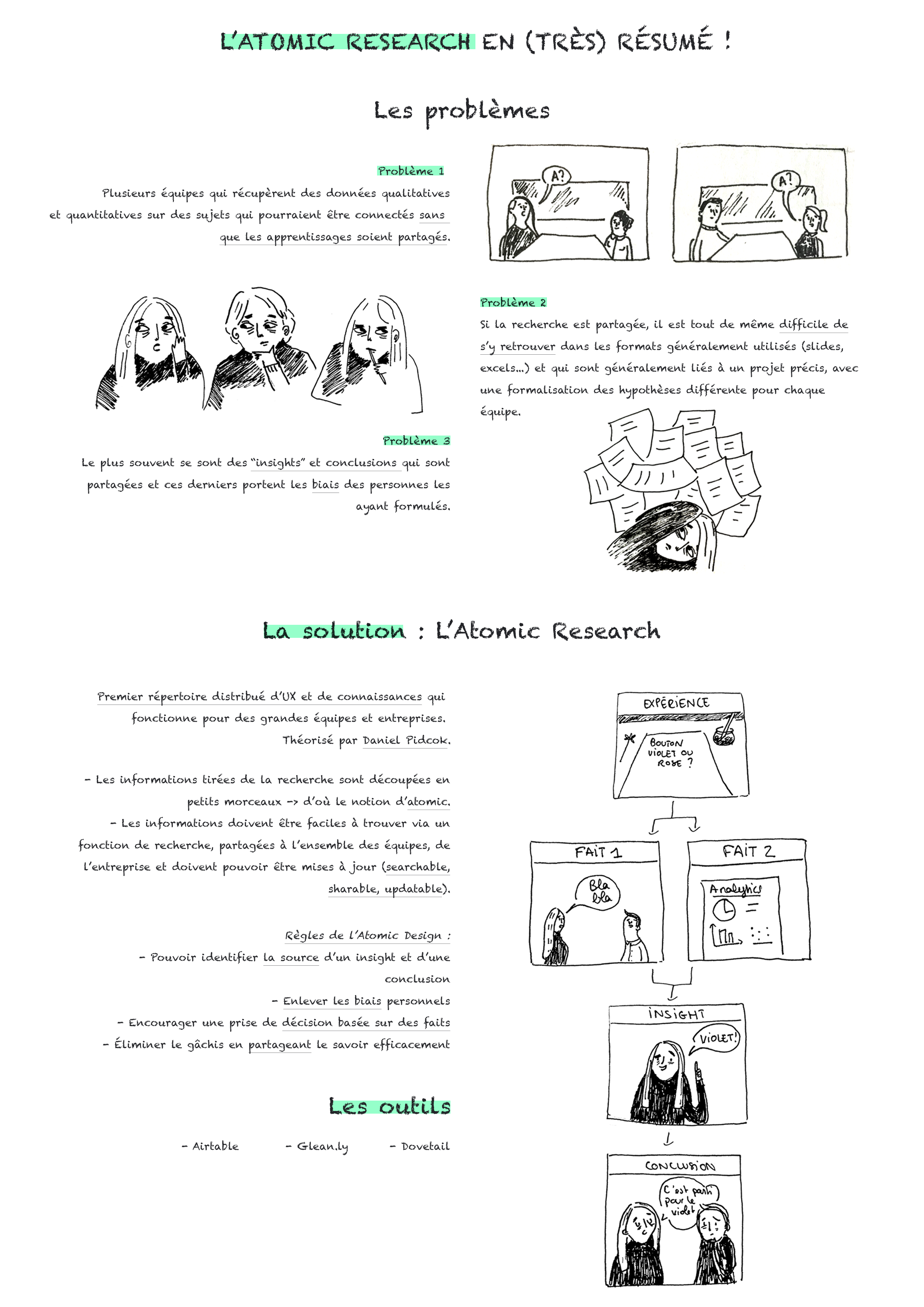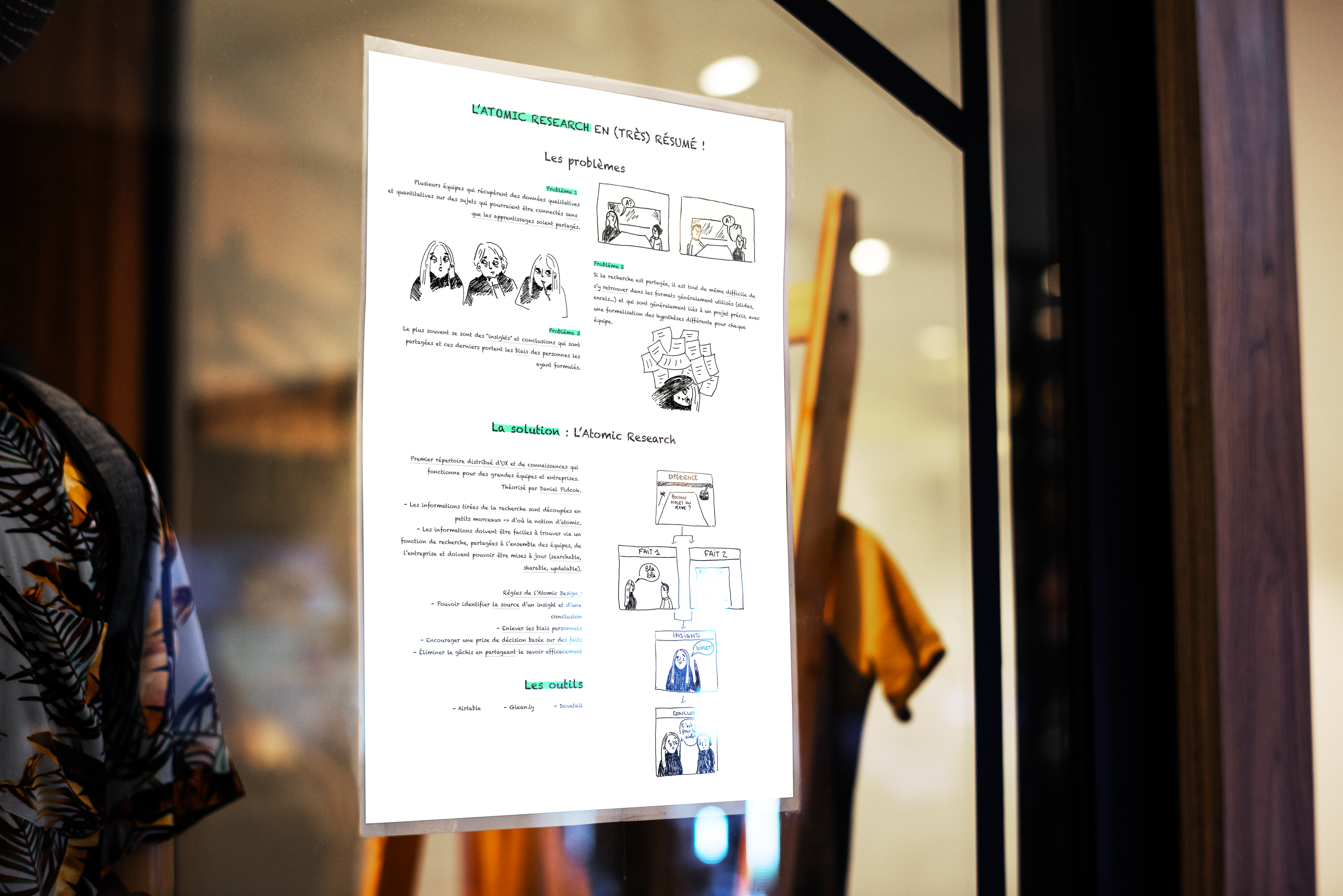To follow up on the article “UX calendar – December 07 – a new user research method: atomic UX research", we offer you a poster in A4 format showing the basic principles of Atomic Research, to display near your desk!
# THE POSTER
[actionbox color=”default” title=”Atomic Research Poster” description=”” btn_label=”Download the poster!” btn_link=”https://www.ux-republic.com/wp-content/uploads/2020/12/atomic-research2-copie.png” btn_color=”primary” btn_size=”big” btn_icon=”” btn_external=” 0″]
# What it says:
The problems :
Problem 1 : Several teams that collect qualitative and quantitative data on subjects that could be connected without learning being shared.
Problem 2 : If the search is shared, it is still difficult to navigate in the formats generally used (slides, excels, etc.) and which are generally linked to a specific project, with a different formalization of the hypotheses for each team.
Problem 3 : Most often it is “insights” and conclusions that are shared and these bear the angle of the people who formulated them.
# The solution: Atomic Research
First distributed repository of UX and knowledge that works for large teams and companies.
Theorized by Daniel Pidcock.
– The information drawn from the research is cut into small pieces -> hence the notion ofatomic.
– The information must be easy to find via a search function, shared with all the teams, the company and must be able to be updated (searchable, shareable, updatable).
The 4 “steps” :
- Experiences : Experiments set up to confirm or invalidate the hypotheses (interviews, surveys, user tests, A/B tests, etc.). It is important to cross several types of experiments in order to recover both qualitative and quantitative data, both behavioral and affirmative.
- facts : verbatims, statistical data… drawn from previous experiments.
- Insights : the interpretation of researchers / UX designers related to the facts.
- Conclusion : decisions and next steps for the team.
Rules of Atomic Design :
– Being able to identify source an insight and a conclusion
– Remove the angle the staff
– Encourage taking decision based on facts
– Eliminate distance waste by sharing know it effectively
# The tools
– Air table https://airtable.com/
– Glean.ly http://glean.ly/
– Dovetail https://dovetailapp.com/
Sources
https://blog.prototypr.io/what-is-atomic-research-e5d9fbc1285c
https://www.youtube.com/watch?v=h9s3DrImGXA&feature=emb_title
Legal
Poster PSD created by rawpixel.com – en.freepik.com https://fr.freepik.com/psd/affiche
Poster PSD created by Vectorium – en.freepik.com https://fr.freepik.com/psd/musique
Illustration inspiration: Mathilde Vangheluwe http://mathildevg.blogspot.com/2012/10/la-tramala-cura-del-tempo.html
See you tomorrow for new surprises in our UX-Republic Advent calendar!
Anne Pedro, UX Designer @UX-Republic
[actionbox color=”default” title=”ADOBE XD training -20%” description=”-20% promotion on the January ADOBE UX training session by giving the code 01-UX-JAN when you register! There is still time…” btn_label=”Our training” btn_link=”http://training.ux-republic.com” btn_color=”primary” btn_size=”big” btn_icon=”star” btn_external=”1″]



